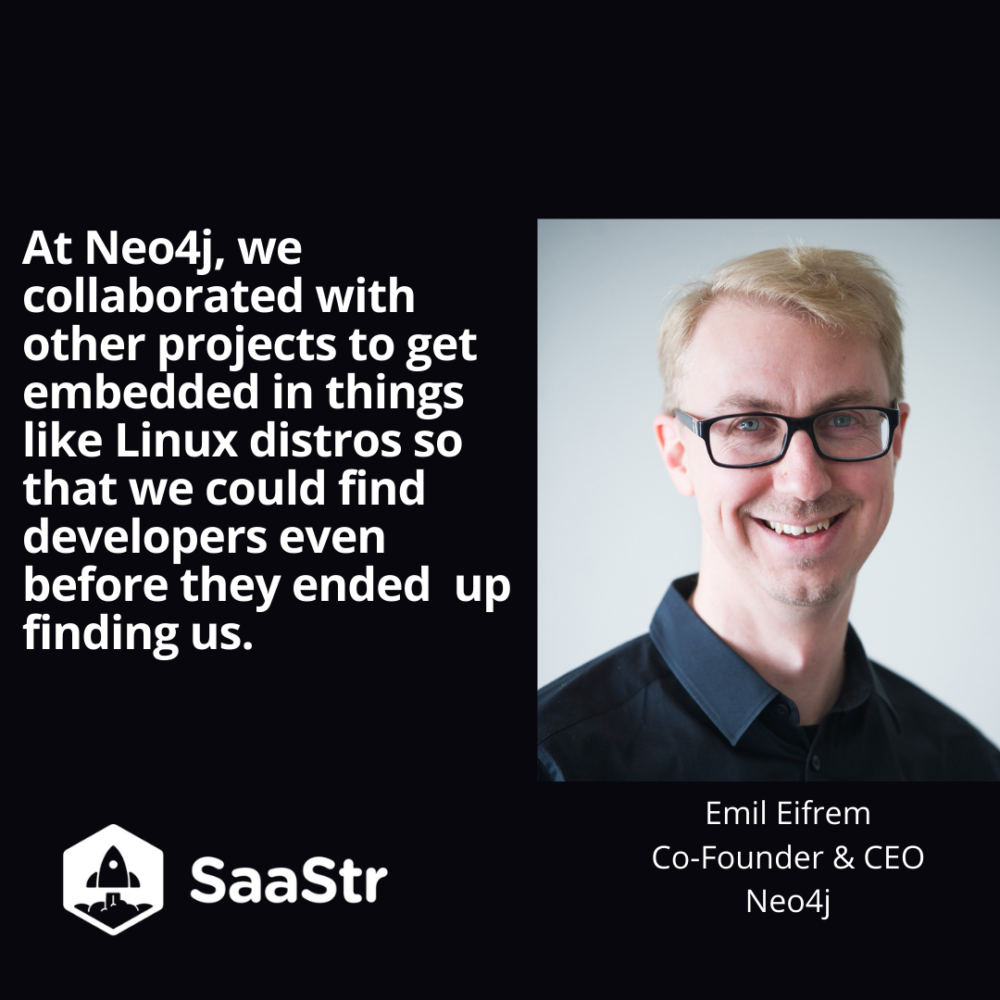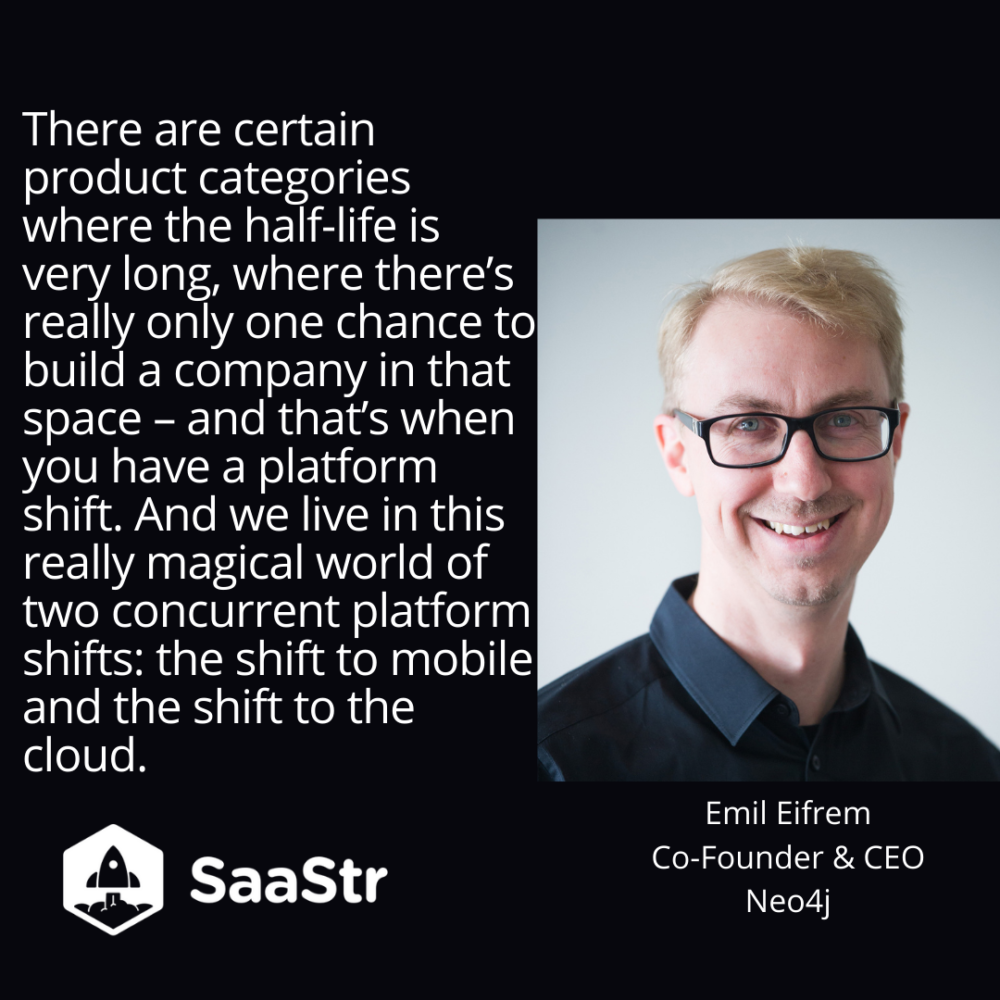With each passing year, more and more of our online existence becomes tethered to the cloud. But how does the cloud take shape, and what can companies do to position themselves at the heart of its growing infrastructure?
Emil Eifrem, founder and CEO of graph database management system Neo4j, has dedicated years to developing his insights into how cloud infrastructure has grown — and where it’s heading.
Infrastructure: Reloaded for the Cloud
When the cloud first began to take shape, the market couldn’t help but be incredibly fragmented: open-source code distributed itself across the online ecosystem, and tons of venture capital funding poured into a new wave of startups.
As should come as no surprise, the early manifestations of this infrastructure overwhelmingly benefited enterprise companies that had either the internal sophistication or the budget to position themselves as early adopters.
These days, however, new projects find themselves shipped into the cloud every day, and most workloads are born and raised there. The fragmentation of the past has largely coalesced around the big players and has wed itself to a mere handful of database models.
However, these developments have also set the stage for a world in which any company, of any size, can potentially access any kind of technology.

The Virtuous Cycle and Reaching Escape Velocity
Over time, meanwhile, a repeatable success pattern has emerged: open-source projects — MongoDB, Elasticsearch, Apache Kafka — transforming into commercial open source projects., and then evolving from there into public companies, with a market value ranging from fifty to one hundred billion dollars.
But what steps do they take to reach escape velocity?
- Awareness: In the early days, we met developers where they lived: blogs, social media, GitHub, et cetera. But we also strove to keep our community engaged, such as Neo4j’s “Graphs4Good” program, in which we focused a lot of energy and goodwill towards improving the world with connected data. This culminated with the release of the Panama Papers in 2017, which builds much of its reporting on Neo4j’s graph database technology.
- Activation: For many community and open-source projects, the bar for activation can remain stubbornly high. In many ways, this is a consequence of the open-source ecosystem, in which the tooling can feel slightly immature, and the documentation is often light (at best). But Neo4j found a way to make headway, often by collaborating with other projects, embedding into Linux distros, and eventually shifting to the cloud — and even going so far as to develop a free-tier.
- Fit/User-Centricity: Open source, in and of itself, can be considered an act of user-centricity — but Neo4j took it a step further by not just developing a query language (Cypher), but by eventually releasing openCypher to the whole community. Neo4j, in effect, gave away their crown jewel product to the competition, but they did so in the hope that a rising tide would lift all boats. But from the resulting critical mass of vendor and user adoption, openCypher helped to break the stranglehold of Structured Query Language (SQL) in database management, thereby giving rise to Graph Query Language (GQL).
- Growth: Open-source shares a lot of its DNA with product-led growth (PLG). But Neo4j’s products also managed to draw in enthusiastic users from other communities, like when we released a graph algorithm package in 2016. And now, most recently, we have also offered a frictionless way to share our product, with our cloud’s perpetual free tier service.

Pro Tips for Modern Cloud Infrastructure
Beyond this cycle, however, we’ve come away from our experience at Neo4j having learned a few things:
- Be Everywhere: Distribution remains of fundamental importance — not just in the cloud, but on-premises (“on-prem”). Many companies, for all their newfound love of the cloud, still often work on-site and on laptops, so an ability to service both mediums allows for a versatile, hybrid deployment.
- Free Trial vs. Free Tier: A free trial may generate leads, but a free tier can generate users and advocates. Compared to the somewhat transient user insights gleaned from a free trial, a free tier can enable full-lifecycle learning and can add value for all users and customers.
- Redraw Your Differentiation: The transition to the cloud can provide a fresh opportunity to re-segment one’s products, which will be free or paid. What distinctions might have worked for the first zero to ten million in annual repeating revenue (ARR) may no longer work as you cross $100M. Furthermore, a transition to the cloud can open up an entirely new world of metrics, like memory and CPU consumption, which you never had before.
- Keep Your Friends Close, and Cloud Platforms Closer: Cloud partnerships can drive an incredible amount of success. At the same time, open-source infrastructure companies can encounter fierce competition, because competitors may do so with your very own product. But if you strike the right balance with both your licensing and free versus paid features, your competitors may be kept at bay by being forced to use either a competitor’s product or something they built in-house.
Key Takeaways:
There is never a better time to build infrastructure companies. And while a blueprint has already emerged, don’t feel compelled to follow it — instead, simply try to take inspiration from it.
The ingredients remain the same: open source software, initially monetizing your enterprise product on both the cloud and on-premises, and ensuring that you have a self-serve cloud product that allows for greater monetization later on. With all of these factors in place, however, the future of cloud infrastructure may truly be a magical time.

